
النبات

مواضيع عامة في علم النبات

الجذور - السيقان - الأوراق

النباتات الوعائية واللاوعائية

البذور (مغطاة البذور - عاريات البذور)

الطحالب

النباتات الطبية


الحيوان

مواضيع عامة في علم الحيوان

علم التشريح

التنوع الإحيائي

البايلوجيا الخلوية


الأحياء المجهرية

البكتيريا

الفطريات

الطفيليات

الفايروسات


علم الأمراض

الاورام

الامراض الوراثية

الامراض المناعية

الامراض المدارية

اضطرابات الدورة الدموية

مواضيع عامة في علم الامراض

الحشرات


التقانة الإحيائية

مواضيع عامة في التقانة الإحيائية


التقنية الحيوية المكروبية

التقنية الحيوية والميكروبات

الفعاليات الحيوية

وراثة الاحياء المجهرية

تصنيف الاحياء المجهرية

الاحياء المجهرية في الطبيعة

أيض الاجهاد

التقنية الحيوية والبيئة

التقنية الحيوية والطب

التقنية الحيوية والزراعة

التقنية الحيوية والصناعة

التقنية الحيوية والطاقة

البحار والطحالب الصغيرة

عزل البروتين

هندسة الجينات


التقنية الحياتية النانوية

مفاهيم التقنية الحيوية النانوية

التراكيب النانوية والمجاهر المستخدمة في رؤيتها

تصنيع وتخليق المواد النانوية

تطبيقات التقنية النانوية والحيوية النانوية

الرقائق والمتحسسات الحيوية

المصفوفات المجهرية وحاسوب الدنا

اللقاحات

البيئة والتلوث


علم الأجنة

اعضاء التكاثر وتشكل الاعراس

الاخصاب

التشطر

العصيبة وتشكل الجسيدات

تشكل اللواحق الجنينية

تكون المعيدة وظهور الطبقات الجنينية

مقدمة لعلم الاجنة


الأحياء الجزيئي

مواضيع عامة في الاحياء الجزيئي


علم وظائف الأعضاء


الغدد

مواضيع عامة في الغدد

الغدد الصم و هرموناتها

الجسم تحت السريري

الغدة النخامية

الغدة الكظرية

الغدة التناسلية

الغدة الدرقية والجار الدرقية

الغدة البنكرياسية

الغدة الصنوبرية

مواضيع عامة في علم وظائف الاعضاء

الخلية الحيوانية

الجهاز العصبي

أعضاء الحس

الجهاز العضلي

السوائل الجسمية

الجهاز الدوري والليمف

الجهاز التنفسي

الجهاز الهضمي

الجهاز البولي


المضادات الحيوية

مواضيع عامة في المضادات الحيوية

مضادات البكتيريا

مضادات الفطريات

مضادات الطفيليات

مضادات الفايروسات

علم الخلية

الوراثة

الأحياء العامة

المناعة

التحليلات المرضية

الكيمياء الحيوية

مواضيع متنوعة أخرى

الانزيمات
Endosomes
المؤلف:
J. Gruenberg and F. R. Maxfield
المصدر:
Curr. Opinion Cell Biol. 7, 552–563
الجزء والصفحة:
2-5-2016
2803
Endosomes
Endosomes comprise a complex series of intracellular organelles that mediate crucial functions in the endocytosis pathway (1). Ligands internalized through clathrin-coated vesicles are first delivered to “early endosomes.” These are tubular/vesicular organelles distributed primarily in the peripheral cytoplasm of the cell. The internal pH of these structures is mildly acidic (pH ~6.0). The low pH is established and maintained by the membrane-associated vacuolar H+bATPaseb and regulated by the Na+K+ATPase. The low-pH environment is essential for certain sorting functions of endosomes. For example, it facilitates dissociation of some ligands, such as low density lipoprotein ) LDL), from their receptors, allowing the receptor to be recycled to the cell surface and reused, whereas the ligand is retained in the cell and degraded. Disruption of the endosomal pH by weak bases, ionophores, or inhibitors of the vacuolar ATPase disrupts the sorting functions of these organelles. The acidic pH within endosomes is used by certain viruses (eg, influenza virus) and toxins (eg, diphtheria toxin) to facilitate membrane fusion or translocation to the cytoplasm.
Early endosomes are the primary sorting organelles in the endocytic pathway, with two principal exit routes: (1) the recycling pathway to the cell surface, and (2) the pathway to late endosomes and lysosomes (1). In addition, proteins may be sorted out of early endosomes to recycling endosomes (a subset of endosomes that have nearly neutral pH and are enriched in transferrin receptors), the trans Golgi network (TGN), and other locations in certain differentiated cell types (for example, the GLUT 4 glucose transporter-containing compartment in adipocytes), transcytotic vesicles in polarized cells, synaptic vesicles in neurones, and MHC class II-containing vesicles in some antigen-presenting cells (2). It is believed that transport between these compartments is mediated by carrier vesicles (although these have not been characterized in detail) that fuse with their target organelles through SNARE/NSF and Rab-dependent mechanisms (3).
Late endosomes receive internalized ligands and receptors from early endosomes and provide a second sorting compartment before lysosomes. Late endosomes are again tubular/vesicular and frequently contain many membrane vesicles or lamellae. The internal pH of late endosomes is more acid (pH ~5.5) than that of early endosomes. Transport from early endosomes to late endosomes is mediated by endosomal carrier vesicles and/or multivesicular bodies that derive from early endosomes.
The different endosomal compartments are not well-characterized biochemically or morphologically. However, analyses of the distribution of Rab family of proteins have suggested that these small Gtpasesmight provide functional markers for endosomal subcompartments (4). Thus Rab 5 is primarily associated with coated vesicles and early endosomes, Rab 7 with late endosomes, and Rab 4 with recycling endosomes (1). Because these proteins have been implicated in the specific fusion involved in vesicular transport, their restricted and unique distributions may define specific transport steps and possibly unique SNARE-dependent fusion (4).
References
1. J. Gruenberg and F. R. Maxfield (1995) Curr. Opinion Cell Biol. 7, 552–563.
2. I. Mellman, P. Pierre, and S. Amigorena (1995) Curr. Opinion Cell Biol. 7, 564–72.
3. J. E. Rothman and G. Warren (1994) Curr. Biol. 4, 220–233.
4. P. Novick and M. Zerial (1997) Curr. Opinion Cell Biol. 9, 496–504.















 قسم الشؤون الفكرية يصدر مجموعة قصصية بعنوان (قلوب بلا مأوى)
قسم الشؤون الفكرية يصدر مجموعة قصصية بعنوان (قلوب بلا مأوى) قسم الشؤون الفكرية يصدر مجموعة قصصية بعنوان (قلوب بلا مأوى)
قسم الشؤون الفكرية يصدر مجموعة قصصية بعنوان (قلوب بلا مأوى) قسم الشؤون الفكرية يصدر كتاب (سر الرضا) ضمن سلسلة (نمط الحياة)
قسم الشؤون الفكرية يصدر كتاب (سر الرضا) ضمن سلسلة (نمط الحياة)

















